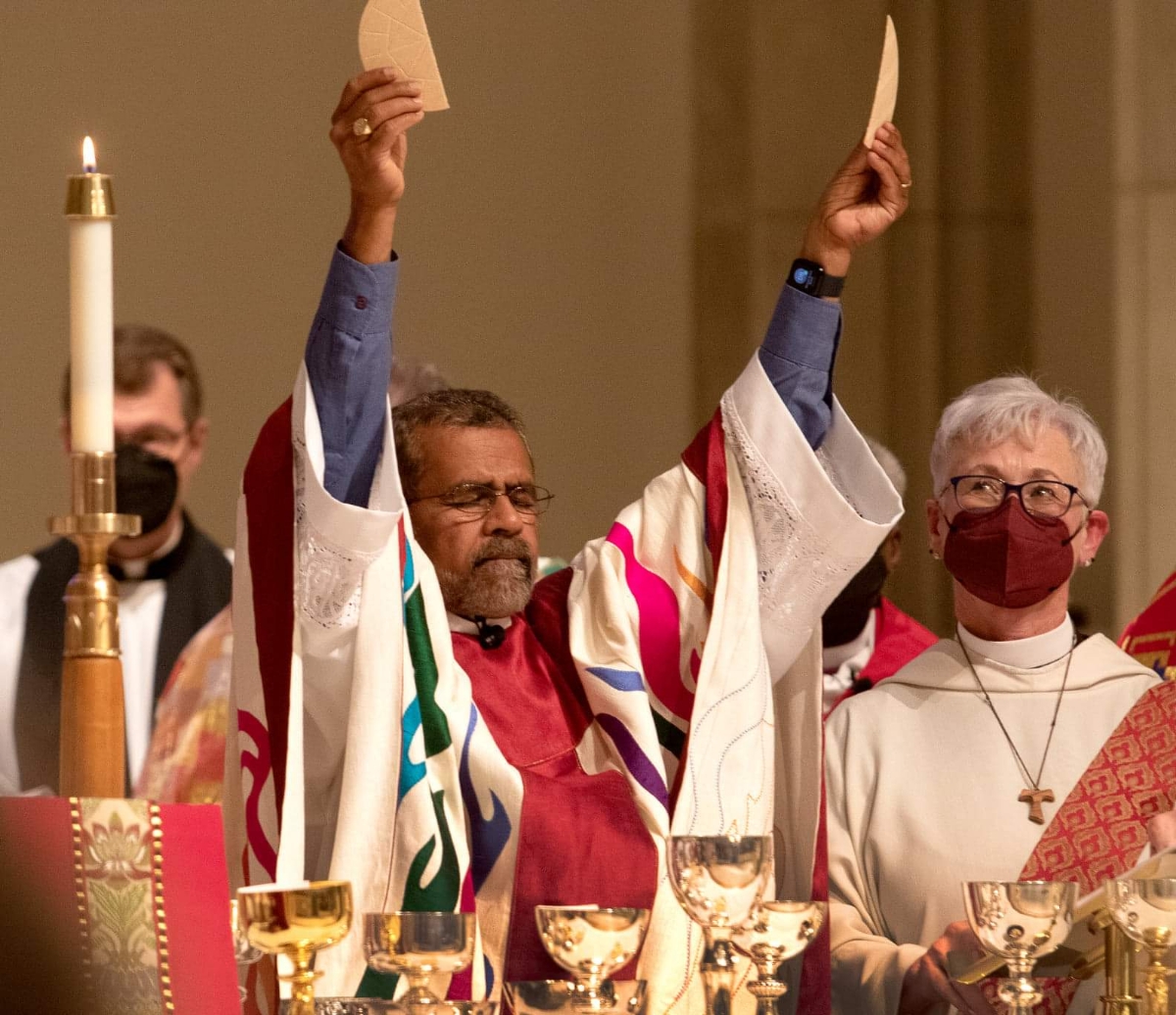 St Alban’s Episcopal Church Bolivar, Missouri Tuesday, June 28, 2022 Reflection #1 on the Ordination and Consecration of The Rt Rev Jos Tharakan What do we think it means? Someone commented on one of my many posts about Jos’ ordination, that there was a “whole lot of ceremony!” It’s true. We Episcopalians love parades, costumes, and liturgical complications. We just do. But beneath those ordered rituals and ceremonial details is a dignity and a beauty that can’t be missed when you actually participate in them. Nothing is actually as silly as it might at first seem to an outsider. There are historical and liturgical reasons for all of those things, and even before you understand them, people do recognize and sense the solemnity and the beauty. If you did not watch the service, I urge you to do so. It is still available on the Episcopal Diocese of Idaho Facebook page or on the Diocese of Idaho YouTube channel. This week I want to highlight a few aspects of the service. Who was included? There were actually four sequential processions led by representatives of the various cultural groups in the Diocese –The first was led in to music by the Mariachi Band, Canteras de Mexico, and included lay civic leaders, lay members of the various diocesan councils and committees, diocesan staff, the search committee and the transition committee whose members did everything to prepare for Jos’ welcome to Idaho – a huge job. The laity are the heart of the Church, ordinary Christians who make up the largest share of the Church’s ministers. It is right that they should enter first. No decisions, including the choice of a bishop, are ever made by clergy alone. Lay people have equal voice and equal vote. No episcopal election can proceed without the consent and affirmation of lay persons, no matter what the clergy want. That is one of our great strengths.The second procession was accompanied by music from a Basque singer; you Missourians may not remember how Idaho was populated by Basque sheep herders who still work in those mountains.This procession included of the minister of ceremonies, the readers of testimonials, presenters of gifts, the cantors, the litanist, and the Bible readers.The “readers of the testimonials” are important. Not only do we require that a new bishop meet certain requirements, we require proof that they have been met. So early in the service, in turn, the secretary of the Election Convention read the certificate of his election by lay and clergy members of the diocese, dated and signed; the Church’s lawyer, (the chancellor,) read the letter testifying to the legitimacy of the election;There was a letter proving his earlier ordination to the priesthood; A letter that stated that a majority of the Standing Committees in the Episcopal Church – mostly lay members – consented to his election; and finally, evidence that a majority of the Episcopal bishops had given their consent. This sounds tedious. But it is important. Nobody can assume this office without the support of the whole church; and without evidence of a legitimate election process.  |

Categories:
Tags:
No responses yet